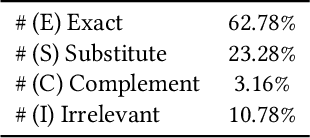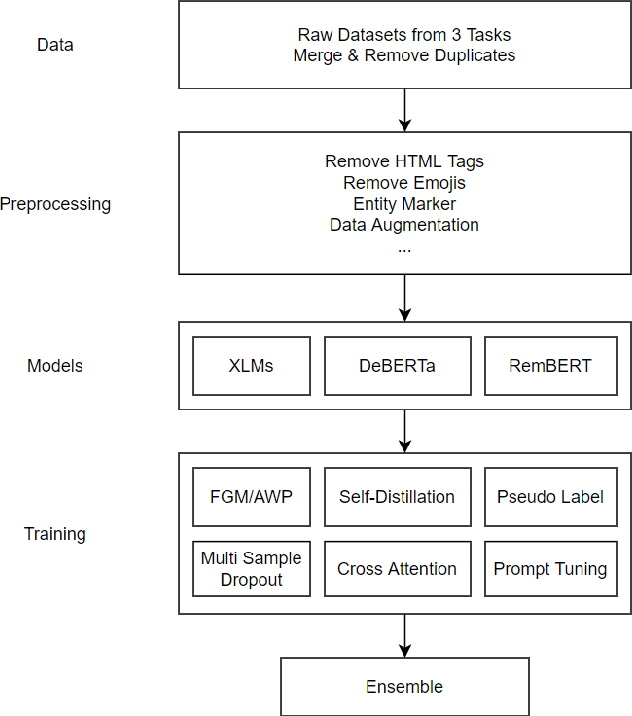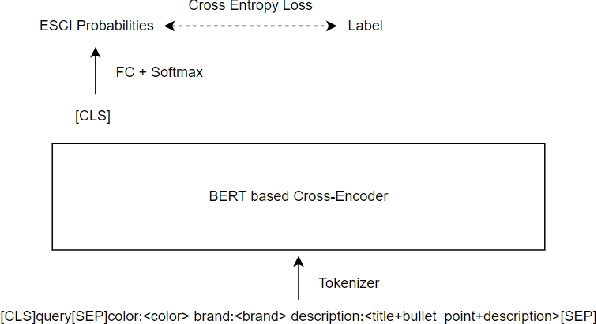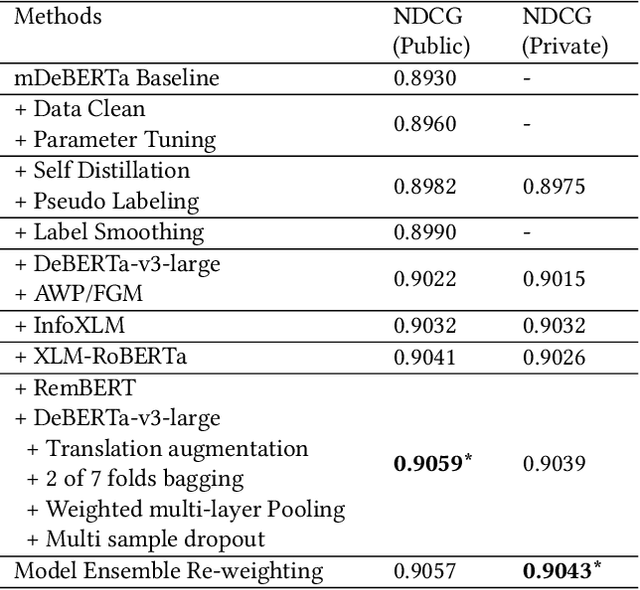Kangxu Wang
Enhancing Model Performance in Multilingual Information Retrieval with Comprehensive Data Engineering Techniques
Feb 14, 2023Abstract:In this paper, we present our solution to the Multilingual Information Retrieval Across a Continuum of Languages (MIRACL) challenge of WSDM CUP 2023\footnote{https://project-miracl.github.io/}. Our solution focuses on enhancing the ranking stage, where we fine-tune pre-trained multilingual transformer-based models with MIRACL dataset. Our model improvement is mainly achieved through diverse data engineering techniques, including the collection of additional relevant training data, data augmentation, and negative sampling. Our fine-tuned model effectively determines the semantic relevance between queries and documents, resulting in a significant improvement in the efficiency of the multilingual information retrieval process. Finally, Our team is pleased to achieve remarkable results in this challenging competition, securing 2nd place in the Surprise-Languages track with a score of 0.835 and 3rd place in the Known-Languages track with an average nDCG@10 score of 0.716 across the 16 known languages on the final leaderboard.
OPD@NL4Opt: An ensemble approach for the NER task of the optimization problem
Jan 06, 2023Abstract:In this paper, we present an ensemble approach for the NL4Opt competition subtask 1(NER task). For this task, we first fine tune the pretrained language models based on the competition dataset. Then we adopt differential learning rates and adversarial training strategies to enhance the model generalization and robustness. Additionally, we use a model ensemble method for the final prediction, which achieves a micro-averaged F1 score of 93.3% and attains the second prize in the NER task.
Using Deep Mixture-of-Experts to Detect Word Meaning Shift for TempoWiC
Nov 07, 2022Abstract:This paper mainly describes the dma submission to the TempoWiC task, which achieves a macro-F1 score of 77.05% and attains the first place in this task. We first explore the impact of different pre-trained language models. Then we adopt data cleaning, data augmentation, and adversarial training strategies to enhance the model generalization and robustness. For further improvement, we integrate POS information and word semantic representation using a Mixture-of-Experts (MoE) approach. The experimental results show that MoE can overcome the feature overuse issue and combine the context, POS, and word semantic features well. Additionally, we use a model ensemble method for the final prediction, which has been proven effective by many research works.
A Semantic Alignment System for Multilingual Query-Product Retrieval
Aug 05, 2022



Abstract:This paper mainly describes our winning solution (team name: www) to Amazon ESCI Challenge of KDD CUP 2022, which achieves a NDCG score of 0.9043 and wins the first place on task 1: the query-product ranking track. In this competition, participants are provided with a real-world large-scale multilingual shopping queries data set and it contains query-product pairs in English, Japanese and Spanish. Three different tasks are proposed in this competition, including ranking the results list as task 1, classifying the query/product pairs into Exact, Substitute, Complement, or Irrelevant (ESCI) categories as task 2 and identifying substitute products for a given query as task 3. We mainly focus on task 1 and propose a semantic alignment system for multilingual query-product retrieval. Pre-trained multilingual language models (LM) are adopted to get the semantic representation of queries and products. Our models are all trained with cross-entropy loss to classify the query-product pairs into ESCI 4 categories at first, and then we use weighted sum with the 4-class probabilities to get the score for ranking. To further boost the model, we also do elaborative data preprocessing, data augmentation by translation, specially handling English texts with English LMs, adversarial training with AWP and FGM, self distillation, pseudo labeling, label smoothing and ensemble. Finally, Our solution outperforms others both on public and private leaderboard.
 Add to Chrome
Add to Chrome Add to Firefox
Add to Firefox Add to Edge
Add to Edge